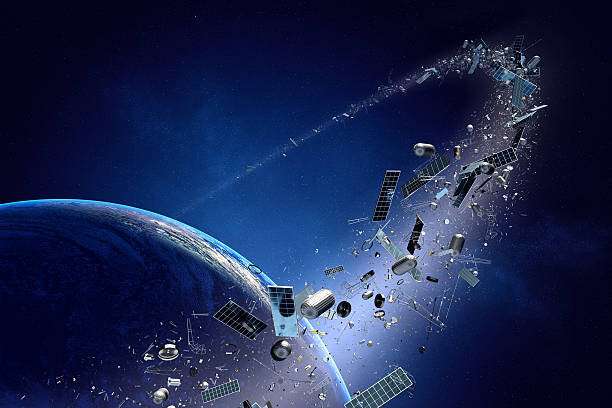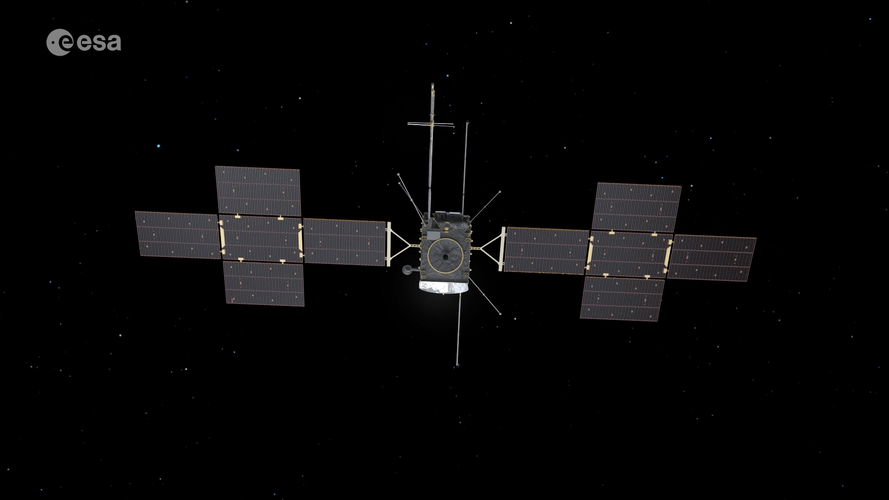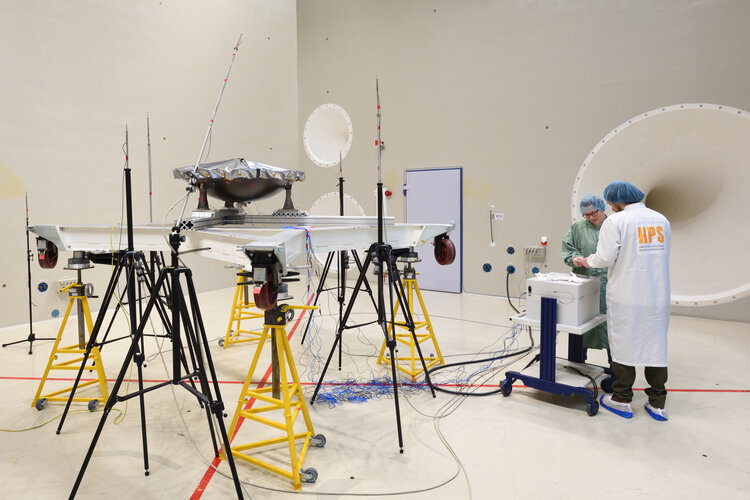
Copernical Team
HETDEX reveals galaxy gold mine in first large survey
 Astronomers have barely scratched the surface of mapping the nearly endless stars and galaxies of the heavens. Using supercomputers, researchers with The University of Texas at Austin have has now revealed the locations of more than 200,000 new astronomical objects. Their goal is to map even more and use that knowledge to predict the ultimate fate of the universe.
The Hobby-Eberly Telescop
Astronomers have barely scratched the surface of mapping the nearly endless stars and galaxies of the heavens. Using supercomputers, researchers with The University of Texas at Austin have has now revealed the locations of more than 200,000 new astronomical objects. Their goal is to map even more and use that knowledge to predict the ultimate fate of the universe.
The Hobby-Eberly Telescop NASA's NuSTAR reveals hidden light shows on the Sun
 Even on a sunny day, human eyes can't see all the light our nearest star gives off. A new image displays some of this hidden light, including the high-energy X-rays emitted by the hottest material in the Sun's atmosphere, as observed by NASA's Nuclear Spectroscopic Telescope Array (NuSTAR). While the observatory typically studies objects outside our solar system - like massive black holes and co
Even on a sunny day, human eyes can't see all the light our nearest star gives off. A new image displays some of this hidden light, including the high-energy X-rays emitted by the hottest material in the Sun's atmosphere, as observed by NASA's Nuclear Spectroscopic Telescope Array (NuSTAR). While the observatory typically studies objects outside our solar system - like massive black holes and co JUICE's final take-off before lift-off
 The Airbus-built JUICE spacecraft is set to embark on a pioneering mission to explore the Jupiter system and study its magnetic fields. The decade-long mission, managed by the European Space Agency (ESA), will search for signs of life-bearing conditions on the Jovian moons, Ganymede, Europa, and Callisto.
These moons have long been of interest to scientists and researchers due to their pot
The Airbus-built JUICE spacecraft is set to embark on a pioneering mission to explore the Jupiter system and study its magnetic fields. The decade-long mission, managed by the European Space Agency (ESA), will search for signs of life-bearing conditions on the Jovian moons, Ganymede, Europa, and Callisto.
These moons have long been of interest to scientists and researchers due to their pot CAPSTONE mission demonstrating utility and resilience at the Moon
 The CAPSTONE spacecraft continues to operate at the Moon and the vehicle is happy and healthy. The mission has accomplished 4 mission objectives and is making progress on additional objectives. Two mission objectives were completed during the transfer to the Moon and both directly informed Artemis 1 secondary payloads with regard to radio and ground station performance.
The system has been
The CAPSTONE spacecraft continues to operate at the Moon and the vehicle is happy and healthy. The mission has accomplished 4 mission objectives and is making progress on additional objectives. Two mission objectives were completed during the transfer to the Moon and both directly informed Artemis 1 secondary payloads with regard to radio and ground station performance.
The system has been NASA's ESCAPADE mission headed to Mars in 2024 on Blue Origin's New Glenn
 Blue Origin, LLC of Kent, Washington, has been contracted by NASA to launch the Escape and Plasma Acceleration and Dynamics Explorers (ESCAPADE) mission through their Venture-Class Acquisition of Dedicated and Rideshare (VADR) program.
Blue Origin, founded by Jeff Bezos, thus far, has only conducted suborbital flights using its New Shepard rocket, known for sending celebrities and space to
Blue Origin, LLC of Kent, Washington, has been contracted by NASA to launch the Escape and Plasma Acceleration and Dynamics Explorers (ESCAPADE) mission through their Venture-Class Acquisition of Dedicated and Rideshare (VADR) program.
Blue Origin, founded by Jeff Bezos, thus far, has only conducted suborbital flights using its New Shepard rocket, known for sending celebrities and space to NASA conducts first 2023 test of redesigned SLS rocket engine
 NASA's newly redesigned RS-25 engine for future flights of the Space Launch System (SLS) rocket, underwent its first hot fire test of the year on Feb. 8 at the agency's Stennis Space Center near Bay St. Louis, Mississippi.
The series of testing supports production of new RS-25 engines by lead SLS engine contractor Aerojet Rocketdyne. The new engines will help power future Artemis missions
NASA's newly redesigned RS-25 engine for future flights of the Space Launch System (SLS) rocket, underwent its first hot fire test of the year on Feb. 8 at the agency's Stennis Space Center near Bay St. Louis, Mississippi.
The series of testing supports production of new RS-25 engines by lead SLS engine contractor Aerojet Rocketdyne. The new engines will help power future Artemis missions SpaceX test fires Starship Super Heavy Booster's 31 Engines
 On Thursday afternoon, at around 3:14 p.m. CST (2114 GMT) , SpaceX conducted a critical milestone towards an orbital test with a full duration static fire test, by simultaneously igniting all 33 next-generation Raptor engines of Booster 7 from SpaceX's Starbase facility in South Texas at Boca Chica Beach, located on the Gulf Coast east of Brownsville.
When
On Thursday afternoon, at around 3:14 p.m. CST (2114 GMT) , SpaceX conducted a critical milestone towards an orbital test with a full duration static fire test, by simultaneously igniting all 33 next-generation Raptor engines of Booster 7 from SpaceX's Starbase facility in South Texas at Boca Chica Beach, located on the Gulf Coast east of Brownsville.
When A Russian satellite has broken into pieces, littering debris in space

A Russian KOSMOS 2499 satellite broke up last month—for a second time—according to the Space Force's 18th Space Defense Squadron. In a recent tweet, the Space Force said they are currently tracking 85 individual pieces of debris at an altitude of 1,169 km (726 miles). The breakup occurred on January 4, 2023, but the reason for the disintegration remains unknown.
At this high altitude, it will take decades for the debris to deorbit and burn up in the Earth's atmosphere. The debris is located in an increasingly busy region in Earth's orbit.
#18SDS has confirmed the breakup of COSMOS 2499 (#39765, 2014-028E)—occurred Jan 4, 2023 at appx 0357 UTC. Tracking 85 associated pieces at est 1169 km altitude—analysis ongoing. #spacedebris#space@SpaceTrackOrg@US_SpaceCom@ussfspoc
— 18th Space Defense Squadron (@18thSDS) February 7, 2023
But this is actually the second breakup event of Kosmos 2499.
Juice’s odyssey of exploration
 Video:
00:03:21
Three-minute cinematic video trailer presenting ESA’s Jupiter Icy Moons Explorer (Juice) mission
Video:
00:03:21
Three-minute cinematic video trailer presenting ESA’s Jupiter Icy Moons Explorer (Juice) mission Sound test of Hera asteroid mission antenna
 Image:
Sound test of Hera asteroid mission antenna
Image:
Sound test of Hera asteroid mission antenna 